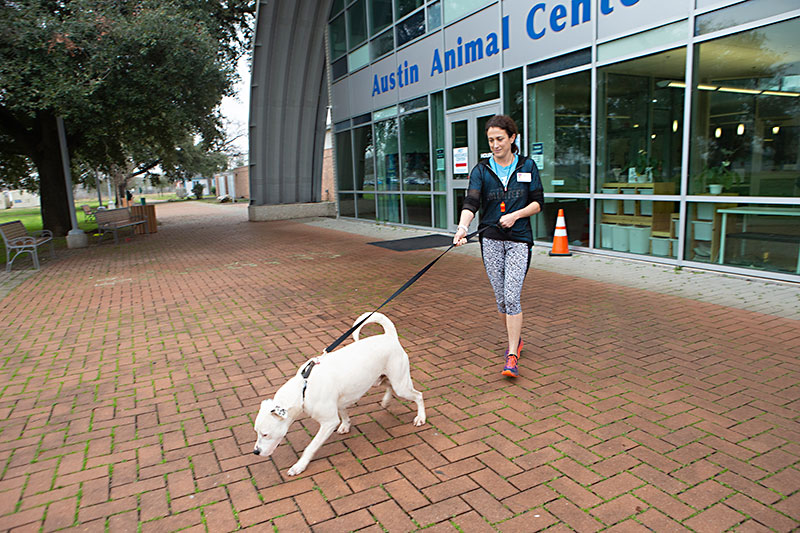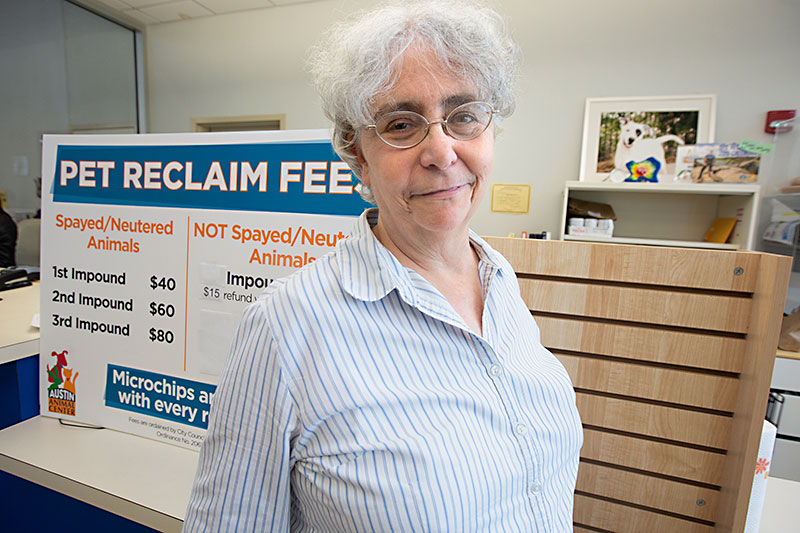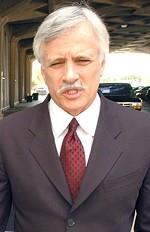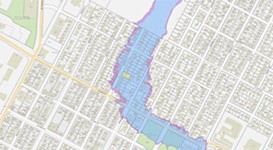Austin Animal Center Strains to Maintain Its No-Kill Status
City shelter struggles with overcrowding and volunteer dissatisfaction
By Nina Hernandez, Fri., Feb. 8, 2019
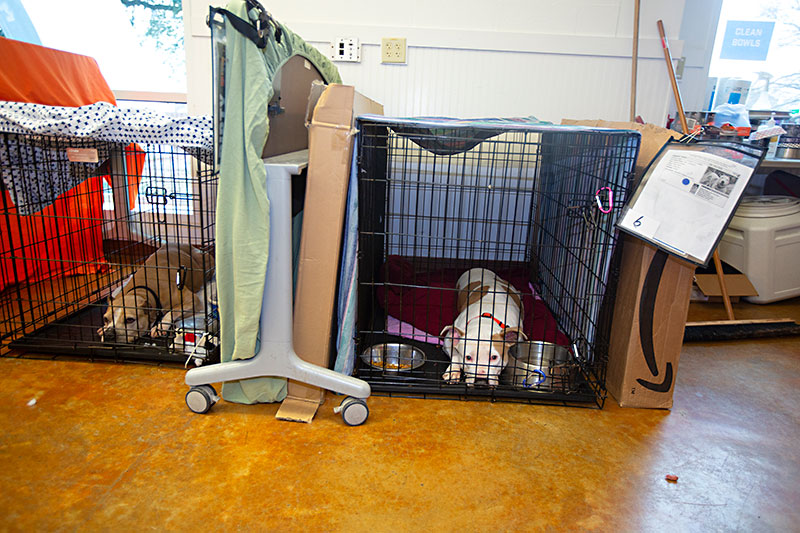
At the end of a group tour of the Austin Animal Center late last year, a few of us held back in the lobby and continued conversations we'd been having all the way through. The City Council aides and then-Interim Assistant City Manager Sara Hensley – who's since returned to her original job heading the Parks and Recreation Department – quickly scuttled off to a bus taking them back to City Hall from the shelter in Southeast Austin, but shelter staffers, a couple of members of the Council-appointed Animal Advisory Commission, and a few volunteers stayed to chat. As a journalist, so did I.
I was having a side conversation with Pat Valls-Trelles, onetime chair of the Animal Advisory Commission and current volunteer advocate, about the current commission and whether it's acting in an appropriate oversight capacity, when Commissioner David Lundstedt interjected. Then, volunteer Terry Colgan jumped to Valls-Trelles' defense, illustrating what has become, over the better part of a year, an increasingly fractious relationship between the city's Animal Services Office, the commission, and the cadre of disgruntled volunteers led by Valls-Trelles. "Don't interrupt her!" he scolded Lundstedt.
We were touring the Austin Animal Center at the insistence of Valls-Trelles and her associates, who have been complaining for the past year about the shelter's worrisome lack of resources (first and foremost being space) and management practices which they feel diminish their real concerns about how the operation is functioning. The shelter on Levander Loop, near the Montopolis bridge on U.S. 183, was approved by voters in the November 2006 bond election, years before Austin committed to its vision of becoming America's largest "no-kill" city, and opened in 2011 just as that vision was being implemented.
Now that the city no longer euthanizes animals for space, and is achieving the 90%-or-more save rates set out in its no-kill goals, the shelter, which handles more than 16,000 animals every year, is always filled to capacity (work has begun on an expansion). It relies heavily on hundreds of people who donate tens of thousands of hours of free time each year exercising and caring for animals, assisting visitors, and a multitude of other duties at the shelter, or serving as foster families for animals needing greater attention and awaiting adoption. (In terms of work hours, the Animal Services volunteer corps amounts to about one-third of the department's total labor force, according to city budget documents.) Many of these volunteers are now going public with their complaints, as the city goes through leadership transitions and tries to mend fences.
After the Hurricane
Tawny Hammond, the last permanent director of the city's Animal Services Office, had talked at length about making Austin a longtime home. Instead, she departed a scant two years into her tenure, leaving in May 2017 for a job with the Best Friends Animal Society, a Utah-based national rescue group. A few months later, Hurricane Harvey devastated the Texas coast, displacing humans and animals alike. Volunteers say the shelter has still not recovered from that onslaught, more than a year later.
An enthusiastic proponent of the no-kill philosophy, Hammond worked hard during her time in Austin to establish partnerships and programs that would help keep more animals out of the shelter in the first place. But just months into Hammond's tenure, the Office of the City Auditor released a sobering report that said while Animal Services was technically complying with its promise to achieve a 90% live outcome rate, it did so by maintaining an overcrowded shelter where animals weren't receiving necessary care.
During an interview in 2016 on the fifth anniversary of no-kill, Hammond told me of her plan to further improve shelter services by focusing on helping people better care for and keep their animals, both through programming and with advocacy around things like breed restrictions. "[In] the next five years, Austin Animal Services and this community we serve will be finding out what people need to keep pets in their homes," she said.
As sincere as Hammond may have been in those intentions, she left before rolling out that plan, and soon thereafter Harvey brought about 1,000 pets of all shapes and sizes into Austin from the coast. The Animal Services foster program already provides homes for about 700 local cats and dogs at any given time; to deal with the increased need after the storm took a nationwide effort to reunite animals with their families, or to place animals in shelters or rescues wherever space could be found.
Volunteers tell the Chronicle that the shelter never quite regained its footing after that influx. Because the Animal Center operation depends so much on volunteer effort, the workload led to volunteers feeling stressed, unappreciated, and ignored by a staff reckoning with an insurmountable task and with no true leader to guide them.
So volunteers began to direct their concerns not only to Animal Services staff, but to higher-ups in the City Manager's Office, to City Council, and to the Animal Advisory Commission. They questioned why the department's flush donation account – used for more than $250,000 in expenses in fiscal year 2018 – couldn't pay for what they saw as critical, unmet needs, such as for professional dog walkers (which the shelter employed in the past) to aid in tackling the physically and emotionally demanding challenges that staff and volunteers face together each day. As one volunteer put it: "No-kill in Austin depends on the kindness of strangers." Council has allocated resources for new walkers in the current budget cycle, a full year after the complaints began.
Tensions Reach a Flash point
Conditions at the shelter, for both humans and animals, continued to deteriorate, as volunteers began to report being suspended or terminated, sometimes after years of service, in what they viewed as retribution for speaking out. They've raised questions about troubling adoptions, kennel conditions, and shelter practices, including a perceived failure to appropriately enforce the department's spay/neuter requirements. When aggrieved volunteers began to reach out to their Council members, they say, their concerns were redirected back to the shelter staffers with whom they were having issues.
Last May, tensions reached a flash point over the fate of a pair of dogs named Wilma and Betty. On a Facebook page shared by Animal Center staff, volunteers, and foster care providers, alarmed volunteers protested Wilma's being placed for adoption without her "bonded" companion Betty, and were further incensed to learn that the adopter had a prior arrest for leaving a dog in a vehicle.
The heated conversation led ultimately to five volunteers being suspended for their remarks. Word got around about a clause in the Animal Services volunteer agreement allowing staff to suspend volunteers at any time for any reason, which they felt was being used to censor their advocacy. Volunteers, who carried a significant portion of the shelter's dog-walking load, were suddenly on the outside looking in. "That's like punishing the dogs for somebody saying something you didn't like," Valls-Trelles said.
By this point, Animal Services had been for a year without a permanent director to replace Hammond, had several other key leadership vacancies in its ranks, and was being overseen by an assistant city manager (Hensley) who was herself an interim. All this led to the group of volunteers feeling their issues were being unheard, and finally Valls-Trelles, a fierce advocate of spay/neuter programs as a solution to chronic shelter overcrowding, led a group of volunteers to the Council Audit and Finance Committee to try to get attention from the dais.
Not only were dogs not getting regular exercise (a major stressor), they told the committee, but some weren't even getting appropriate bathroom breaks. Leaving dogs isolated in those conditions leads to longer stays, one volunteer testified, thus forcing the shelter to get creative and perhaps cut corners in its adoption tactics, with dogs and cats being placed in homes quickly and at a reduced or waived fee. (That's what happened to Wilma.)
"Unfortunately, overcrowding does create the impetus for what I would consider 'cleaning house' events, zero-cost adoptions that do have recidivism as it relates to returns of dogs," said volunteer Tom Rott. "That does lead to volunteer criticism and terminations, which leads, unfortunately, as more volunteers get suspended or terminated that would walk, leaves more dogs that cannot be walked at that point. It is a vicious cycle that has been going on three years now."
Later, Animal Advisory Commissioner David Lundstedt would disagree with Rott's criticism of "cleaning house" events (like Halloween-themed "specials" on black cats and dogs, or the recent, cringe-worthy "$5 Footlong Adoption Day" for animals at least 12 inches long). "I'm not aware of any study that says free adoptions leads to return of animals or anything like that," he countered. "In a perfect world, if this was a small rescue, you could do home visits, you could charge $120, but that's not the way to run a no-kill shelter."
Furthermore, Lundstedt says, he finds problematic some of the language used by volunteers to describe supposedly undesirable adopters, particularly those with fewer resources. "What's next – somebody shouldn't have a kid because they're low-income?" he asked.
"Everybody Loves the Animals"
After the Audit and Finance Committee meeting last May, Hensley and Valls-Trelles began working together to ease the tension. Valls-Trelles, whose work in shelters and involvement with Animal Services dates back to the 1980s, aimed to take a work-from-within approach to the problem, making efforts to manage and triage the volunteer corps' complaints – which ranged from serious concerns to occasional deluded fantasies – so Hensley could have a chance to address some of the issues. While the request for more dog walkers worked its way through the budget process, Hensley also worked to change the morale-killing language in the volunteer contract.
Then a distemper outbreak hit the shelter with at least 40 dogs getting sick. Volunteers criticized the staff's response and ramped up their efforts to bring their issues directly to Council, becoming regular fixtures at Citizen Communication at the Thursday meetings. Except for former CM Ora Houston, who would sometimes meet with the group off the dais, the volunteers say they never got much response from Council, and some felt they were being dismissed as fanatics.
One volunteer acknowledged that "some people do cross the line and act like employees, but they are doing a lot of work." Valls-Trelles acknowledged that it's a tough group to shepherd. "I've borne the brunt of that," she said. "The thing about the volunteers, that I will say in their defense, is they are very committed to the animals, and when they get a little bit out of whack with people, you've just got to step aside and say, 'We value what they do for the animals.'"
Lundstedt agreed. "Everybody loves the animals. They just have different views about how to deal with it."
Crossing a New Threshold
That December day we toured the center, we visited a group of dogs stored in crates inside what was designed to function as a conference room. Due to a shortage of kennel space and a surplus of dogs, shelter staff has been forced to find any and all ways to house the animals left over. In addition to playrooms and conference areas, dogs can also sometimes be found in staff offices or left waiting in animal control trucks. Upon our entrance, the dogs inside the playroom began to yip in unison, pawing at their carabiner-reinforced kennel doors.
As we walked up to the building at the start of the tour, Hensley acknowledged that the $12 million Austin Animal Center was never designed to sustain no-kill. Often, every single available kennel is full, some containing two (compatible) dogs, and that's with an army of foster care providers, breed-specific rescue groups, and Animal Services' partners at Austin Pets Alive! (operating out of the Town Lake Animal Center that AAC was built to replace) and the Austin Humane Society all working in tandem.
Last month, on Jan. 31, saw a new threshold being crossed at Council, as City Manager Spencer Cronk thanked the returning group of speakers and pointed out Animal Services' new interim chief Kimberly McNeeley, a longtime city staffer who filled Hensley's shoes as Parks and Recreation Department director while Hensley stood in as ACM. She was there taking notes on the volunteers' suggestions regarding the qualities Austin should be looking for in its next permanent shelter chief. Valls-Trelles and company felt they'd finally earned a nod from the dais.
The group emphasizes that the search for the new Animal Services officer should take into account other success metrics besides just live outcomes. McNeeley is getting excellent marks so far. Before she took over this post, she helmed PARD's Aquatics Division, responsible for rebuilding Austin's long-neglected pool system. Her hands-on approach – cleaning kennels and walking dogs – is already pleasing volunteers, who have longed for a more robust management presence on campus. Valls-Trelles at least has hope McNeeley can right the ship. "A lot of good people started leaving, and I hope we caught it in time that there's still some good people there, still some good energy there," she said.
The Austin Animal Shelter is always looking for volunteers and foster homes. See the details at www.austintexas.gov/department/aac.
Got something to say on the subject? Send a letter to the editor.





